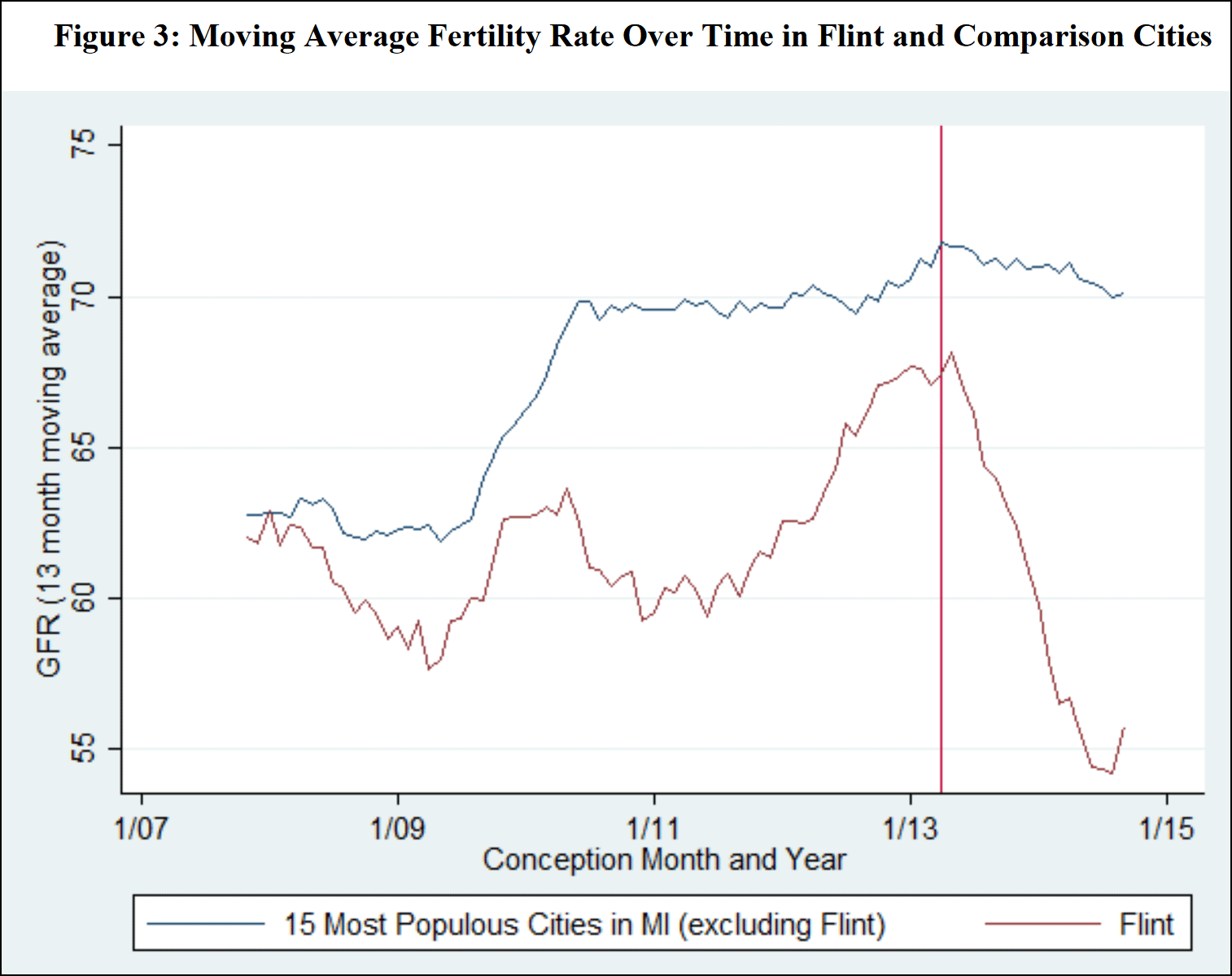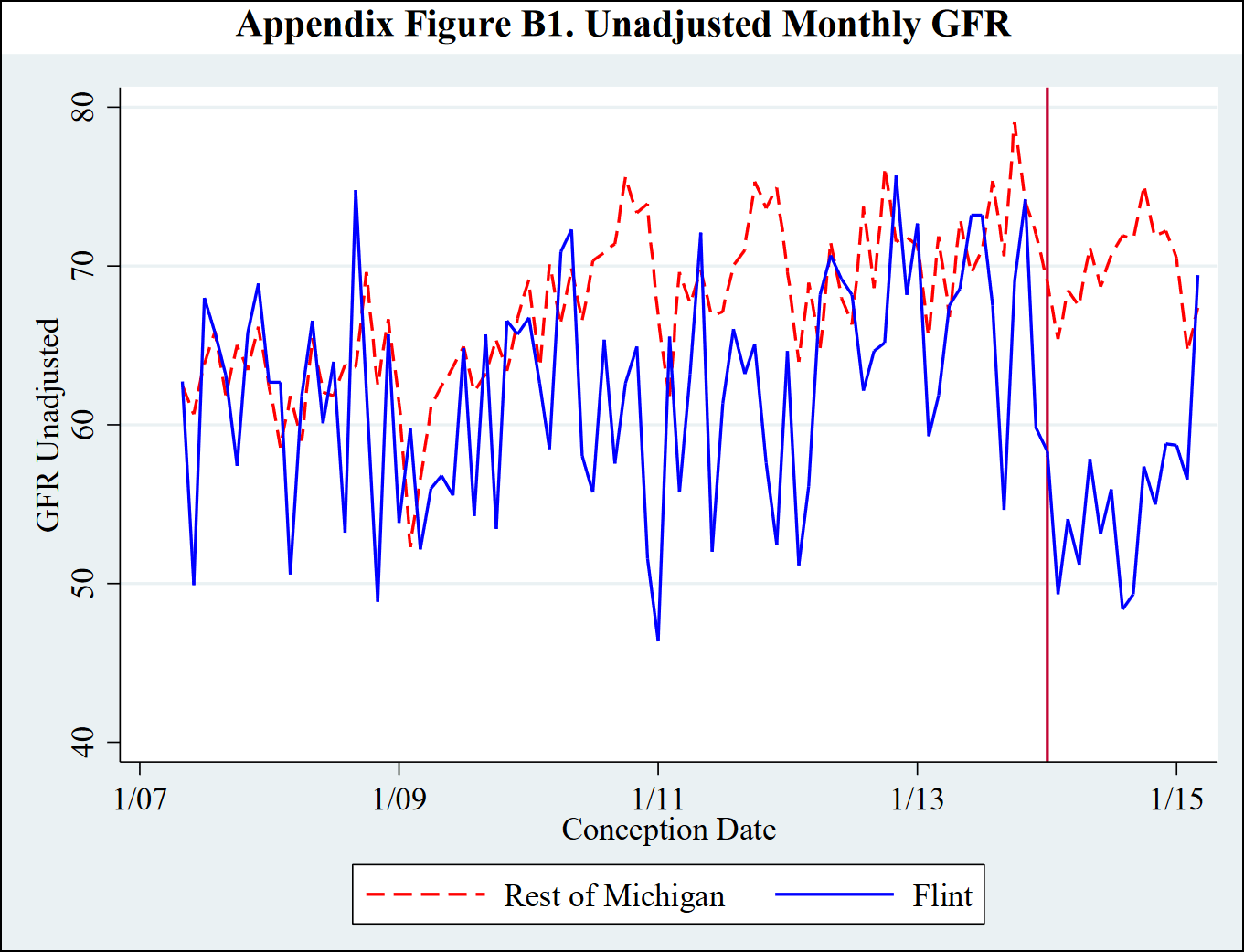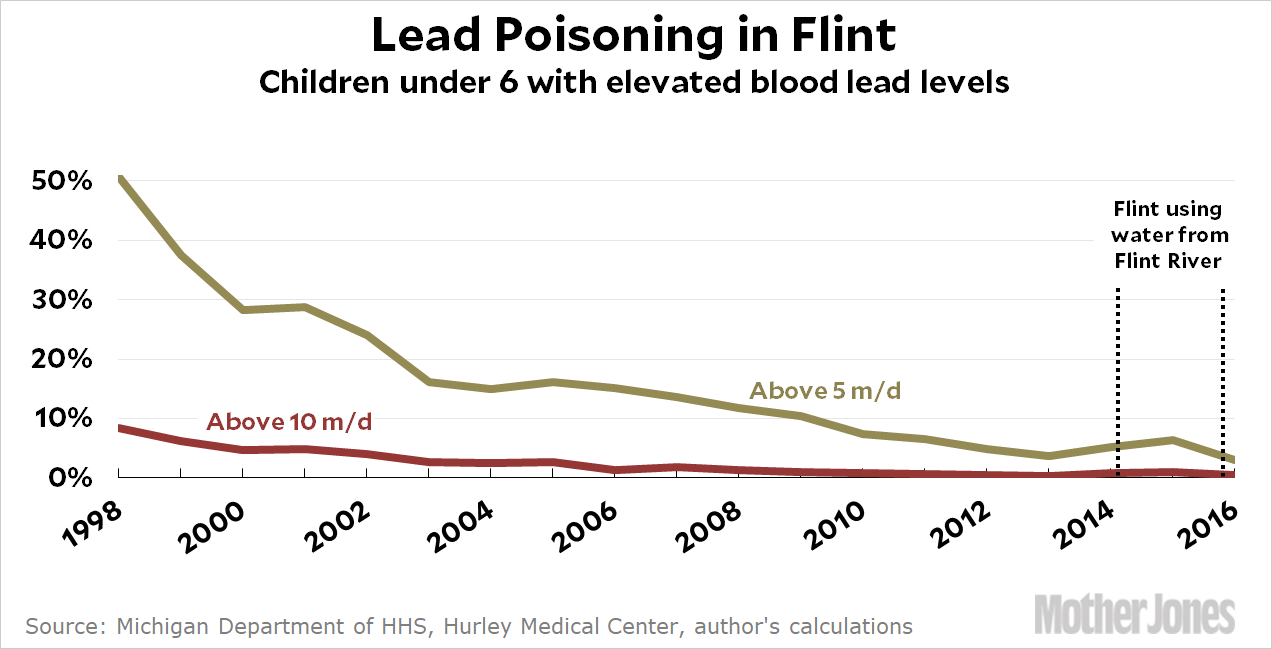Several people have pointed me to a recent paper that investigates the effect of Flint’s lead-poisoned water on fertility rates. Here’s what it looks like:

This is stunning: the gross fertility rate plummets from 67 to 54 when Flint switches to water from the Flint River. That’s a 20 percent decrease in less than two years.
But I’m skeptical. First off, I’m not sure why the authors use a moving average. It’s to “remove both seasonality and idiosyncratic noise,” they say, but a moving average is a pretty crude tool for doing that. Here’s the unadjusted chart:

That’s a lot of noise all right. The problem is that Flint switched its water supply in April 2014, while the red line represents January 2014. This means that fertility dropped enormously from December 2013 to February 2014—and then nothing more happened. Women who conceived in November and were thus exposed to bad water for four months had high fertility rates, while women who conceived a month later and were exposed to bad water for five months had dramatically lower fertility rates. That’s a helluva response to one extra month of exposure.
But it’s still possible. However, there’s also this chart, which you may remember from last year:

Although lead poisoning increased during the switch to Flint River water, it increased only to 2011 levels. Why would that cause fertility rates to plummet well below 2007 levels?
One possibility is that it’s not lead at work here. There was other stuff in Flint’s water too, and it’s possible that some other poison caused this.
But I’m skeptical that lead could be responsible. For one thing, fertility in Flint doesn’t show any kind of steady increase over the years as lead levels steadily declined. If lead really affected fertility, Flint women would have been virtually barren back in the 90s and earlier. For another thing, I’m not aware of any research showing a clear effect of lead poisoning on fertility rates—and certainly nothing showing the kind of huge and sharp change we see here. Finally, even if lead does cause a loss of fertility, the size of the response in Flint seems out of proportion to the actual change in lead levels.
I’m not saying this research is wrong. There really is a lot of noise here, which makes analysis difficult. And there does seem to be a drop in fertility. So the authors might be onto something. But I’d take it with a grain of salt until someone else confirms it using an independent methodology.


















